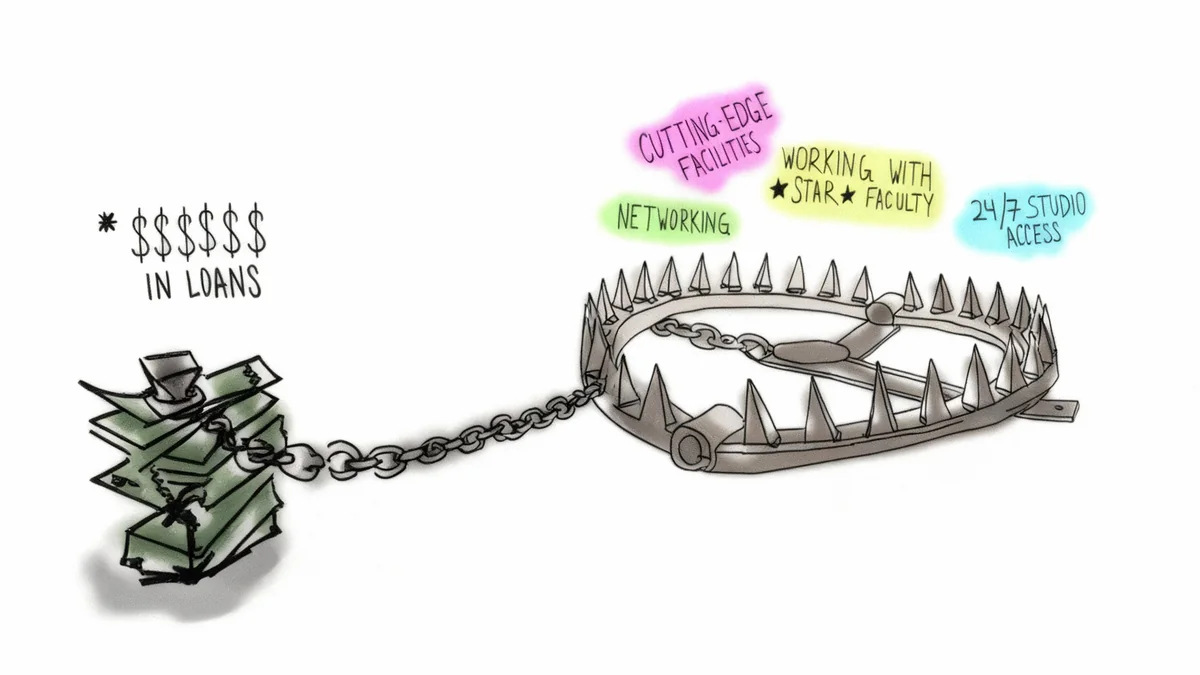Australia's humanities disciplines are facing significant threats due to recent funding changes and government policies. These shifts are expected to accelerate a decline in student enrollments, impacting the future of arts and social sciences education across the country. Universities are grappling with new financial models and restrictions on student numbers, creating an uncertain landscape for these vital fields.
Key Takeaways
- New government policies limit university over-enrollments, impacting humanities.
- Changes in funding models threaten the viability of arts and social sciences programs.
- High tuition fees for humanities degrees raise concerns about graduate debt repayment.
- Research indicates a declining salary premium for university graduates, including those in humanities.
- Concerns about the long-term future of Chinese student enrollments add to financial pressures.
Funding Changes Impact University Enrollments
Recent policy adjustments by the Australian government are set to further challenge humanities faculties. A key change involves a block on universities enrolling students beyond their allocated quotas. This restriction could significantly reduce the number of students able to pursue humanities degrees, leading to a faster decline in these areas.
The government's new funding model aims to steer students towards courses deemed to have higher employment outcomes. However, critics argue this approach overlooks the broader value of humanities education. The changes have intensified concerns first raised when funding cuts to these disciplines were initially proposed.
Fact: Enrollment Caps
The new government policy places a strict limit on the number of students universities can enroll. This directly affects how many places are available in humanities programs, potentially leading to fewer students pursuing these studies.
Rising Fees and Graduate Debt Concerns
Tuition fees for humanities degrees have reached record levels in Australia. This increase has sparked questions about the financial burden on graduates and their ability to repay student loans. Many fear that non-repayment could become a common issue for arts graduates.
According to recent research, the salary premium for university graduates is declining across all fields in Australia. This means that a university degree may not always lead to a significantly higher salary, and in some cases, it could even reduce earning potential compared to alternative pathways. This trend complicates the value proposition of higher education, especially for fields with lower immediate earning prospects like humanities.
"The combination of increased fees and a declining graduate salary premium creates a challenging environment for students considering humanities degrees," said a spokesperson for a national student advocacy group. "We need to ensure education remains accessible and provides a clear path to a sustainable future."
Impact on Student Choices
The higher costs could deter prospective students from choosing humanities subjects. This is particularly true for those from lower socio-economic backgrounds, who might be more sensitive to the financial risks involved. The long-term effects could include a less diverse student body within these fields.
Background: Universities Accord
The Universities Accord is a government initiative aimed at shaping the future of Australia's higher education sector. Its expansionary vision for university enrollments is now being questioned in light of research suggesting a declining graduate salary premium. Critics argue that the Accord's goals may not align with the current economic realities for many graduates.
New Zealand Humanities Face Similar Challenges
Across the Tasman, New Zealand's humanities sectors are also under pressure. Grants for humanities research and programs have been significantly reduced or shut off entirely. This has led to what many describe as an 'existential threat' to these disciplines.
A university dean warned that social sciences are the 'proverbial canary in the coalmine' for restrictions in other research areas. This suggests that the challenges faced by humanities and social sciences could soon extend to other academic fields, signaling a broader shift in government and institutional priorities.
- Funding Cuts: Reduced government and institutional support.
- Research Restrictions: Limitations on grant availability for specific fields.
- Long-Term Impact: Potential loss of expertise and academic capacity.
Student Housing and International Enrollments
The higher education sector is also experiencing 'ultra-volatile' student enrollments, which are causing 'turbulence' in the student housing market. Property developers fear that the 'glory days' of non-stop building may be over. Some areas now face over-supply issues, while city centers continue to experience overcrowding.
A significant factor contributing to this volatility is the projected collapse in Chinese student numbers. Long-term trends, including a declining birth rate in China, suggest that the number of Chinese students looking to study abroad will be much lower within the next decade. This demographic shift could have profound financial implications for Australian universities, which heavily rely on international student fees.
Future of Online Learning
To stay competitive, institutions need to innovate in online learning. This is particularly crucial as traditional enrollment models face challenges. Embracing new technology and digital mindsets can help universities prepare students for the future workplace and adapt to evolving educational demands. Industry partnerships and discussions on artificial intelligence are becoming more important for higher education leaders.
Data Point: Chinese Student Decline
Projections indicate a 'highly likely' collapse in Chinese student numbers by 2040. This is driven by internal demographic changes in China, including a significant reduction in birth rates over the past few decades.
Student Safety and Reporting Harassment
Concerns also exist regarding university responses to harassment. Reports suggest that institutions' handling of such incidents is 'putting students off reporting'. Women, in particular, have reported negative experiences when attempting to report harassment. These problems are likely to be made worse by the ongoing funding crisis, which could limit resources for student support services.
Ensuring student safety and providing effective support mechanisms are crucial for maintaining a positive learning environment. The current funding challenges could undermine efforts to address these critical issues, potentially leading to a further decline in student trust and well-being.
The overall landscape for higher education in Australia, especially for humanities and social sciences, is undergoing significant transformation. Funding cuts, rising fees, enrollment caps, and demographic shifts are creating a complex and challenging future for universities and their students.




